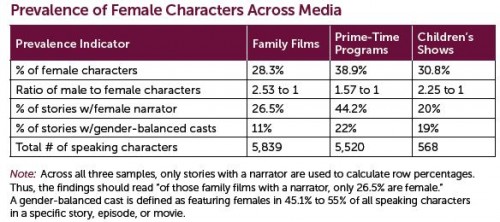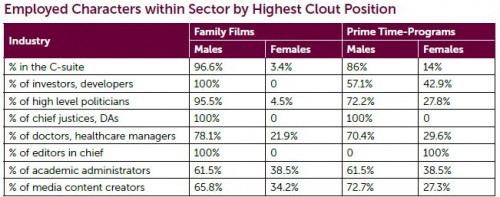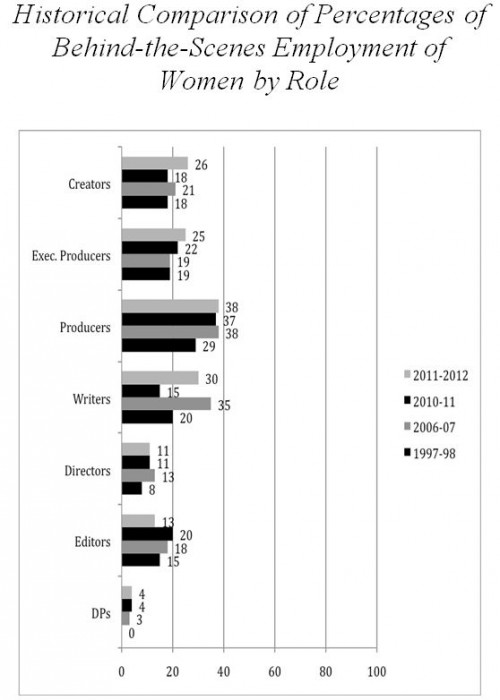The Geena Davis Institute on Gender in Media has released several research reports detailing gender inequalities in Hollywood, both in front of and behind the camera.
To get a sense of how men and women are portrayed on the large and small screen, researchers analyzed 11,927 speaking parts from three sources: 129 top-grossing family films (rated PG-13 or lower) released from 2006 to 2011, 275 prime-time programs from 2012 (from 10 broadcast and cable channels), and 36 kids’ programs that aired on PBS, Nickelodeon, or Disney in 2011. The analysis indicated that women are underrepresented as characters in speaking roles, as well as narrators:
However, gender differences in representation aren’t just about who is on the screen; it matters how they’re depicted, too. Female characters in the sample were more likely to be sexualized, including factors such as sexy clothing, exposed skin, and having their attractiveness specifically referenced by another character:
Men and women were also depicted differently in the workplace. In the sample, few female characters were presented in high-level positions within their occupations:
What about behind the scenes? Researchers associated with the institute looked at the gender breakdown of those employed in behind-the-scenes jobs (writers, directors, producers, etc.) in Hollywood as well. Unsurprisingly, the results indicate that women remain significantly underrepresented in these positions.
According to their analysis of the 250 highest-grossing films in the U.S. in 2012, women held just 18% of these positions. In fact, women’s representation in these behind-the-scenes roles has been basically stagnant for over a decade:
There’s significant variation behind the scenes as well. Women made up a quarter of producers and one in five editors, but only 9% of directors and 2% of cinematographers:
Women hold a larger proportion of behind-the-scenes roles in broadcast television than in the film industry. Looking at a randomly-selected episode of every drama, comedy, or reality show that aired during prime time in the 2011-2012 season, 26% of these roles went to women:
Again we see wide variation in the different behind-the-scenes jobs. Women are much more likely to be producers than directors in the sampled episodes, and only 4% of directors of photography were women. And while the percent of female creators and writers for prime time TV shows jumped in 2011-2012, less than a third of either position was held by women:
For more on representations in Hollywood, see our earlier posts on race and gender in films and Anita Sarkeesian applying the Bechdel test to the 2012 Oscar Best Picture nominees.
Gwen Sharp is an associate professor of sociology at Nevada State College. You can follow her on Twitter at @gwensharpnv.

































